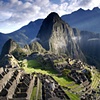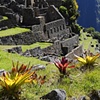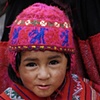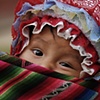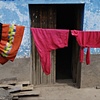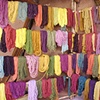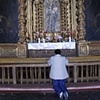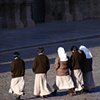
Peru
Peru is a country of 29 million people in western South America, multiethnic and multicultural, resulting in considerable diversity in its art, music, food and literature. Spanish is the main language, but many Peruvians speak Quechua and other native languages. Peru has a history of complex societies, one of the oldest dates back to 3000 BC. The Inca empire had its emergence in the 15th century and in the next 1000 years became the largest empire in pre-Columbian America. The Inca society was agrarian, using sophisticated techniques of irrigation and terracing.
The result of these techniques can readily be see in Machu Picchu, the official site of Inca rulers in 1432-1472. Machu Picchu has become known as the best known icon of the Inca world. It was not discovered by the Spanish during the Spanish Conquest of Peru in 1532. Because it was abandoned in 1572, probably because of a smallpox epidemic, it became known as "The Lost City of the Incas". It was rediscovered and brought to international attention in 1911 by an American historian and archeologist, Hiram Bingham. It became a UNESCO World Heritage site in 1983 describing it as "an absolute masterpiece of architecture and a unique testimony to the Inca civilization", and in 2007 was voted one of the New Seven Wonders of the World.
The result of these techniques can readily be see in Machu Picchu, the official site of Inca rulers in 1432-1472. Machu Picchu has become known as the best known icon of the Inca world. It was not discovered by the Spanish during the Spanish Conquest of Peru in 1532. Because it was abandoned in 1572, probably because of a smallpox epidemic, it became known as "The Lost City of the Incas". It was rediscovered and brought to international attention in 1911 by an American historian and archeologist, Hiram Bingham. It became a UNESCO World Heritage site in 1983 describing it as "an absolute masterpiece of architecture and a unique testimony to the Inca civilization", and in 2007 was voted one of the New Seven Wonders of the World.



